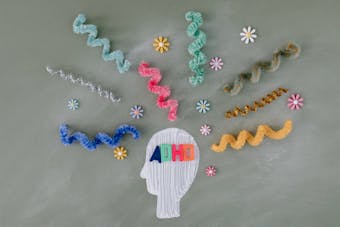Many adults live their entire lives feeling something is not quite right: disorganization, impulsivity, constant forgetfulness... without realizing that behind it all, there might be ADHD. But distinguishing it from other issues like anxiety or depression is not an easy task. Here, we explore how to do it correctly, diving deep into every aspect that influences an accurate diagnosis.
Why Can ADHD Be Confused in Adulthood?
Diagnosing ADHD in adults is complex and requires a comprehensive view. Let's break it down:
- Symptom transformation: Childhood hyperactivity becomes internal restlessness, inability to relax, or a constant need to stay busy.
- Overlap with other disorders: Anxiety, depression, bipolar disorders, and even substance abuse can mimic or mask ADHD symptoms.
- Difficulty recalling childhood: Adults rarely have clear memories of their childhood behaviors, and current criteria require symptoms to have started before age 12.
- Hasty self-diagnoses: Social media and quick online quizzes have popularized self-diagnosis, but without professional evaluation, these results are, at best, approximations.
Understanding these factors is the first step to avoid misdiagnosis and provide appropriate help to each individual.
The Diagnostic Process Step by Step
1. Complete Medical History
Exploring medical history is crucial. Professionals should ask about:
- Presence of inattention, hyperactivity, or impulsivity symptoms during childhood.
- Impact of these symptoms on academic performance, family, and social relationships.
- Symptom evolution: Have they remained constant? Have they changed over time?
- Family history of ADHD or other neuropsychiatric disorders.
2. Evaluation with Specialized Tools
Observation is not enough; measurement is essential. Recommended tools include:
- DIVA 2.0: A structured interview analyzing current and past symptoms.
- ASRS: A self-assessment questionnaire identifying common ADHD symptoms in adults.
- Neuropsychological tests: Such as the Stroop Test or Wisconsin Card Sorting Test, evaluating executive functions, cognitive flexibility, and inhibitory control.
Using multiple information sources and tests improves diagnostic accuracy.
3. Input from Close Contacts
Family, friends, partners, or coworkers can provide observations that the patient may not detect. Collecting this information helps confirm symptom persistence and impact across different life contexts.
4. Detection of Comorbidities
ADHD rarely appears alone. Over 60% of adults with ADHD have at least one comorbid disorder. Examples include:
- Anxiety disorders: Causing restlessness, insomnia, and concentration difficulties.
- Depression: Leading to symptoms of demotivation and cognitive sluggishness.
- Sleep disorders: Such as obstructive sleep apnea or chronic insomnia, severely impacting attention and memory.
- Substance abuse: Alcohol, cannabis, or stimulants that initially "help" with focus but complicate the clinical picture.
5. Differential Diagnosis
A careful differential diagnosis is essential to avoid confusing ADHD with other psychiatric or medical problems. Here's an expanded comparison:
| Disorder | Characteristics | How it differs from ADHD |
|---|---|---|
| Anxiety | Excessive worry, difficulty relaxing, muscle tension | Anxiety involves active worry. ADHD shows distraction even without specific fears. |
| Depression | Persistent sadness, loss of interest, fatigue | Concentration difficulties in depression are secondary to deep sadness. |
| Sleep disorders | Daytime sleepiness, irritability, difficulty concentrating | Symptoms improve when sleep problems are corrected; ADHD symptoms persist. |
| Borderline Personality Disorder | Intense, unstable relationships, fear of abandonment, emotional impulsivity | In ADHD, impulsivity is broader and less dependent on emotional bonds. |
Why Accurate Diagnosis Matters
An accurate diagnosis is not just a label; it is the gateway to personalized treatment tailored to real patient needs. Without a proper diagnosis:
- Patients may receive inappropriate medications (like antidepressants or anxiolytics) that don't address the core issue.
- The risk of substance abuse increases due to the desperate search for symptom relief.
- Self-esteem suffers from the persistent feeling of "failure" or "lack of willpower."
In contrast, a correct diagnosis opens doors to:
- Appropriate pharmacological treatments (such as methylphenidate or atomoxetine).
- Specific psychotherapy (such as CBT adapted for ADHD).
- Personal and organizational coaching strategies.
Conclusion
Identifying ADHD in adults is no simple task but is fundamental. It requires rigor, sensitivity, and specialized training. Beyond the diagnosis, what truly matters is offering each person the opportunity to better understand themselves, alleviate their suffering, and reconnect with their ability to live fully, creatively, and harmoniously.
If you suspect you may have ADHD or know someone struggling silently, don't hesitate to seek specialized help. The first step is always the hardest, but also the most transformative.


